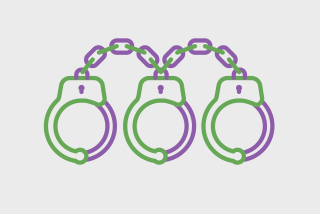California lawmakers target fentanyl as opioid overdoses surge

SACRAMENTO — California lawmakers are responding to a surge in fentanyl overdoses and deaths in their cities with a list of bills that include imposing stronger penalties for distributing the synthetic opioid and easing access to safer consumption and treatment.
“There is no doubt in my mind that the fentanyl epidemic is an urgent public health crisis. There is also no doubt in my mind that we have not acted with adequate urgency to address that,” said Assembly Member Cottie Petrie-Norris (D-Irvine) during a news conference Tuesday to unveil Assembly Bill 2246, a measure to strengthen punishment for distribution and possession. “I think it’s important for us as a Legislature to turn the page on that and act urgently now to protect our kids.”
The proposal would allow prosecutors to pursue a sentence of 20 years to life for those who distributed fentanyl that resulted in a deadly overdose, and would make it a felony to possess 2 or more grams of the opioid. The measure would also add sentence enhancements for selling fentanyl in areas around children or on social media. And it would classify fentanyl distributed for illicit use as a Schedule 1 drug, a label used by the U.S. Drug Enforcement Administration for narcotics that don’t have an acceptable medical use and are the most likely to be abused.
“The bottom line for me is we have to ensure that those who are profiting from the fentanyl crisis, those who are poisoning our kids, know that there are consequences and know that the punishment will fit the crime,” Petrie-Norris said.
Fentanyl addiction has quickly become one of the most concerning public health crises in the country. The highly addictive synthetic opioid is typically used in medical settings to mitigate extreme pain. It is as much as 100 times more potent than morphine, according to the U.S. Drug Enforcement Administration, rendering it extremely dangerous outside of a supervised medical setting. Even 2 milligrams can be lethal.
The drug helped drive deadly overdoses in the United States to more than 100,000 over the 12-month period that ended April 2021, according to the U.S. Centers for Disease Control and Prevention — an increase of 28.5%.
California is no stranger to the crisis. The state Department of Public Health recorded 3,946 fentanyl-involved deaths in 2020. San Francisco recorded 98 overdose deaths in January and February of this year, according to a recent medical examiner’s report, and most involved fentanyl. The drug is also behind alarming trends in Los Angeles County, where deadly overdoses skyrocketed by 48% during the first five months of the COVID-19 pandemic compared with the same period in 2019, according to the county Department of Public Health.
Petrie-Norris’ bill is among a flurry of proposals in Sacramento to address the problem.
Assembly Member James Ramos (D-Highland) wants to crack down on social media as a marketplace for opioids with Assembly Bill 1628, which would require companies such as Snapchat to implement policies that prohibit the sale of fentanyl and other controlled substances on their platforms. Ramos introduced a second bill to make overdose-reversing medication Narcan more available and to set up local overdose response teams through a state Department of Justice pilot program.
“Fentanyl is a deadly crisis ravaging our young people, adults and our state,” Ramos said during a January news conference.
One of the more controversial efforts to curb overdoses and deaths is Senate Bill 57, a measure to legalize in certain jurisdictions so-called safe injection sites, or areas where adults can use drugs in a supervised setting with trained staff. The proposal would authorize pilot programs in San Francisco, Oakland, the city of Los Angeles and Los Angeles County.
State Sen. Scott Wiener (D-San Francisco) said SB 57 is a tool to “reduce harm, save lives and help people get connected to treatment and services.”
“The time has come for an all-hands-on-deck approach to our overdose death crisis, and safe consumption sites are a proven strategy to save lives,” Wiener said in a January statement.
Republicans have their own ideas on how to stem the crisis.
One bill would require hospitals to test drug-screening urine samples for fentanyl; another would require courts to advise individuals convicted of certain crimes in writing that it is “extremely dangerous” to manufacture and distribute the drug and that, “if someone dies as a result, the defendant can be charged with voluntary manslaughter or murder.” A third bill would establish the California Fentanyl Abuse Task Force in efforts to collect data on usage and to ramp up public awareness, and a separate measure would set up a grant program under the California Health and Human Services Agency for locals to battle the crisis.
Petrie-Norris said it will not be easy to land her proposal on Gov. Gavin Newsom’s desk. California Democrats have in recent years shied away from adding penalties to the state’s penal code in favor of supporting rehabilitation and diversion programs. On Tuesday, a Republican-led bill to add penalties for fentanyl possession failed to pass the Assembly Committee on Public Safety.
Petrie-Norris said it is important for legislators to balance rehabilitation with holding people accountable for the flood of illegal fentanyl distribution in California.
“Despite the fact that this is a commonsense proposal, we are facing an uphill battle to move this through the Legislature,” she said.
But Jeannette Zanipatin, the California state director for the Drug Policy Alliance, cautioned against any proposal that mimics the “war on drugs” policies of the 1980s and 1990s. Zanipatin said increasing penalties would funnel more low-level sellers into prison or jail and would disproportionately affect Black, brown and Indigenous people.
“The concern is that once you introduce a measure like this that targets sellers, in addition to folks feeling stigmatized, it really pushes them more underground,” Zanipatin said. “We also see people engage in more risky behavior, which also leads to more individuals dying.”
She said federal efforts to crack down on fentanyl trafficking have not done much to curb its distribution and use. Instead of following suit, Zanipatin said, California should focus its efforts on community-based treatment models.
“The same approaches with a different name isn’t going to change anything,” she said. “We have to change our approach and do something that is innovative and more centered in harm-reduction approaches.”
More to Read
Sign up for Essential California
The most important California stories and recommendations in your inbox every morning.
You may occasionally receive promotional content from the Los Angeles Times.











